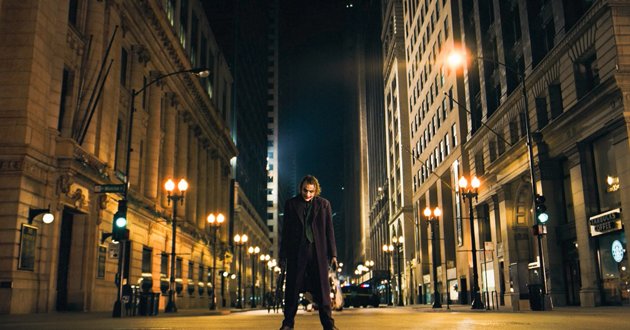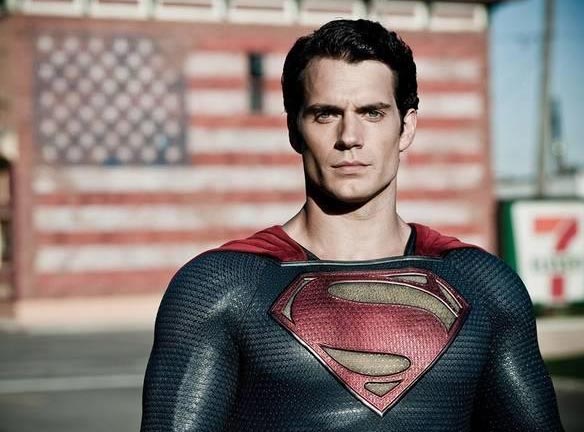
There’s a reason I’m busting out The Dark Knight for this week’s Ten Tips. This weekend I experienced a super-human catastrophe in Man of Steel. And I want to look at an actual well-made superhero film to see how to do it right. What’s interesting here is that two of the major players are the same in both projects (Christopher Nolan and David Goyer). The big flashy addition is Zack Snyder, which tells me that his paws may have been the ones that dirtied up the Man of Steel waters. With that said, I’m not going to pretend like The Dark Knight is some tour de force in screenwriting. I’ve battled many a time with this screenplay and feel that it has just as many weaknesses as it does strengths. With that said, it’s a far superior screenplay to Man of Steel, particularly in the area of character. So let’s see what we can find when we compare the two behemoths. I suspect some some nifty tips!
1) Give us a main character who’s active – It’s one of the simplest and often-stated screenwriting rules there is, and yet us screenwriters constantly forget it, finding ourselves 60 pages into our screenplays and wondering why they’re so boring. One only needs to watch Man of Steel to see how an inactive main character can destroy a movie. It makes them (the main character) bland, which forces the story/plot to work overtime to overcome this issue. That’s likely why we had so much overplotting in Man of Steel. The writers sensed something was wrong but couldn’t figure out what, so they just kept ADDING MORE PLOT. The simplicity of having an active main character is that they forge forward, carving out the story on their terms. Look at Bruce Wayne. The guy wants to make a difference so he creates Batman to do so. He WANTS to fight crime and clean up the streets, so he’s always out there actively pursuing that. Superman in Man of Steel is the opposite.
2) Beware the reluctant protagonist – Building on that, Man of Steel made me take a hard look at the reluctant protagonist. By “reluctant,” I mean a character who’s reluctant to engage in the central conflict of the film. That’s Clark Kent. He’s reluctant to get involved in the world’s problems. A big reason this doesn’t work is because by being “reluctant,” you’re basing the entirety of your hero on a negative trait – avoidance – which pretty much goes against everything that’s fun about movies (our hero ENGAGING in the adventure). There are movies where it works (Michael Corleone in The Godfather) but it usually doesn’t, especially in action movies. The word “reluctant protagonist” now scares me. It should probably scare you too.
3) Just tell us what’s happening dammit – I’ve read a few amateur screenplays recently where the writer tries to do way too much with their action description. They write stuff like, “Sweat glistens off Joe’s knuckles as he wrestles the gun out of his pocket.” There are times where you want to add a little flair to your writing, but for the most part, just tell us what’s happening. Here’s how Jonathan and Christopher Nolan write an early scene before the bank robbery in The Dark Knight: “A man on the corner, back to us, holding a CLOWN MASK. An SUV pulls up. The man gets in, puts on his mask. Inside the car – two other men wearing CLOWN MASKS.” These are two of the top writers in the business and every word in that description is something a third grader would understand.
4) “A&P” (An Active main character with Personality) – The character type who’s typically the most fun to watch is ACTIVE (making his own decisions and pushing the story forward himself) with PERSONALITY (is charming or funny or clever or smart or a combination of all these things). Look no further than one of the most beloved characters of all time, Indiana Jones, to see how that combination works. Or Iron Man. Or Sherlock Holmes. While I wouldn’t say Bruce Wayne is going to open at The Laugh Factory anytime soon, he does have a personality, likes to have fun with his money, and has a sense of humor. Combined with his desire to fight crime (being active), he’s got the coveted A&P. Superman in Man of Steel has neither the A or the P, which is why he’s so forgettable. As a rule, try to have the A and the P for your protag. If you can’t, give him the A or the P. If you can’t give him either, I guarantee you you have a boring protag.
5) Backstory is the enemy – Remember that superhero origin stories are by definition required to show us the backstory that led to our hero becoming who he is. In the real world of spec screenwriting, backstory is the enemy. Unless there’s some really unique or traumatic or shocking thing that happened in our character’s past, don’t show us. And if you do, show us only the bare minimum of it. It can even be boiled down to a quick expositional sentence if you do it right. Batman Begins handled its backstory a lot better than Man of Steel, but in both cases, the main plot (taking down the Scarecrow and Zod respectively) had to be pushed to the second half of the script, something that will never be accepted in the spec arena.
6) Invisible Backstory is your friend – You may not tell us a single thing about your main character’s past, yet you – the WRITER – should know everything that happened to your hero since the day he was born. This knowledge leads to SPECIFICITY OF CHARACTER, a character who is unique because of the extensive “real” life he’s lived in your imagination. The less you know about your hero, the less specificity you’ll be able to infuse him with, which leads to genericness. This is one of the quickest ways I can differentiate the boys from the men in screenwriting.
7) Conflict is your weapon against exposition – One of the earlier scenes in The Dark Knight has Bruce talking to Alfred about needing improvements to the Bat Suit as well as getting info on the new District Attorney (who’s dating Rachel). It’s a straight forward exposition scene and, for that reason, one of the more forgettable of the film. Contrast this with when Bruce meets Harvey Dent (the District Attorney) out for dinner. Harvey’s with the love of Bruce’s life, Rachel, and Bruce has brought along a hot ballerina. There’s a lot of exposition in this scene, mostly in regards to Harvey trying to save the city, but the scene is fun because of the conflict: Wayne sizing up Harvey and the jealousy between Bruce and Rachel. Conflcit is your weapon against exposition. Use it whenever the evil EXPO rears its head (Nolan forgot this simple rule in Inception, which is why so many of his early scenes are boring. They’re pure exposition with zero conflict).
8) Brains over brawn – I think one of the reasons Batman is more popular than Superman is because he can’t just fly away. He can’t just use his heat vision to burn a hole through a guy. He’s gotta use his brains. Granted, he’s got a lot of money and that money has created a lot of gadgets, but Batman’s way more dependent on his wits than his powers. I bring this up because I read so many scripts where the writer gets his hero out of a battle with a gun or a roundhouse kick or a superpower. The thing is, it’s always more rewarding when the hero uses his wits (his INTELLIGENCE) to get out of that situation. So always look to your hero’s mind to solve his problems, first. Only use physical force as a last resort.
9) Have your bad guy earn his keep – Whenever I re-read The Dark Knight, I’m always studying the villain, since the Joker is one of the most famous villains of all time. He’s lasted decades, whereas most villains last the two hours that make up the film (Die Hard With a Vengeance anyone?). Upon reading The Dark Knight, I realized that for truly timeless villains, you gotta like them a little bit. And I think one of the reasons we like watching The Joker is because the guy earned his keep. He wasn’t handed anything. He had to rob a bank and infliterate and intimidate the biggest baddest nastiest dudes in town. As crazy as it sounds, we kind of respect him for that, and it makes us sorta like him. So make your bad guy earn his keep. We’ll respect him (and actually like him) more.
10) Rational vs. Irrational Villains – Something I noticed while comparing The Dark Knight to Man of Steel, is that they have two polar opposite villains. General Zod is rational and calculated and has strong reasoning for doing what he’s doing. The Joker, on the other hand, is irrational and unpredictable and confusing. No doubt The Joker is the much scarier of the two. Through this, I learned the value of bad guys who are a bit unpredictable, a bit out of control. When you think about it, those are the scariest people in life because they don’t have that “rational” button you can push. I was never scared of General Zod cause the guy was just so darn rational.
These are 10 tips from the movies “The Dark Knight” and “Man of Steel.” To get 500 more tips from movies as varied as “Aliens,” “Pulp Fiction,” and “The Hangover,” check out my book, Scriptshadow Secrets, on Amazon!


